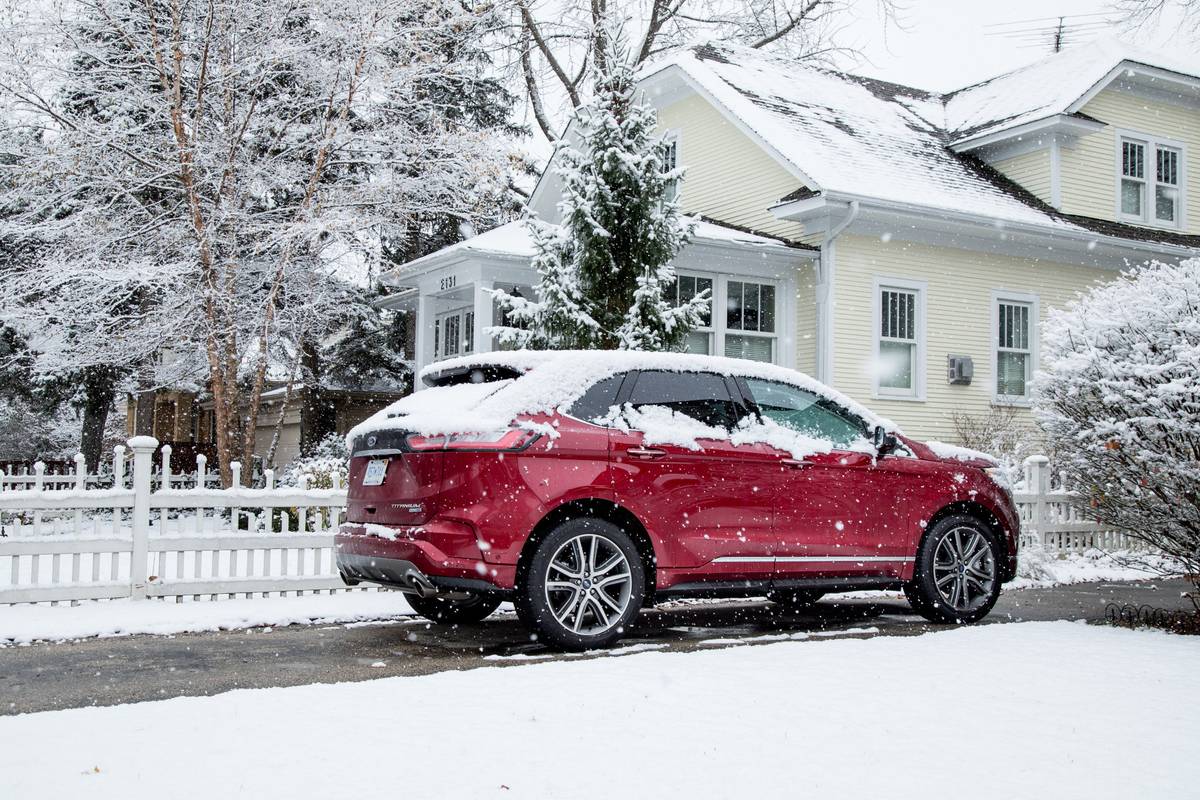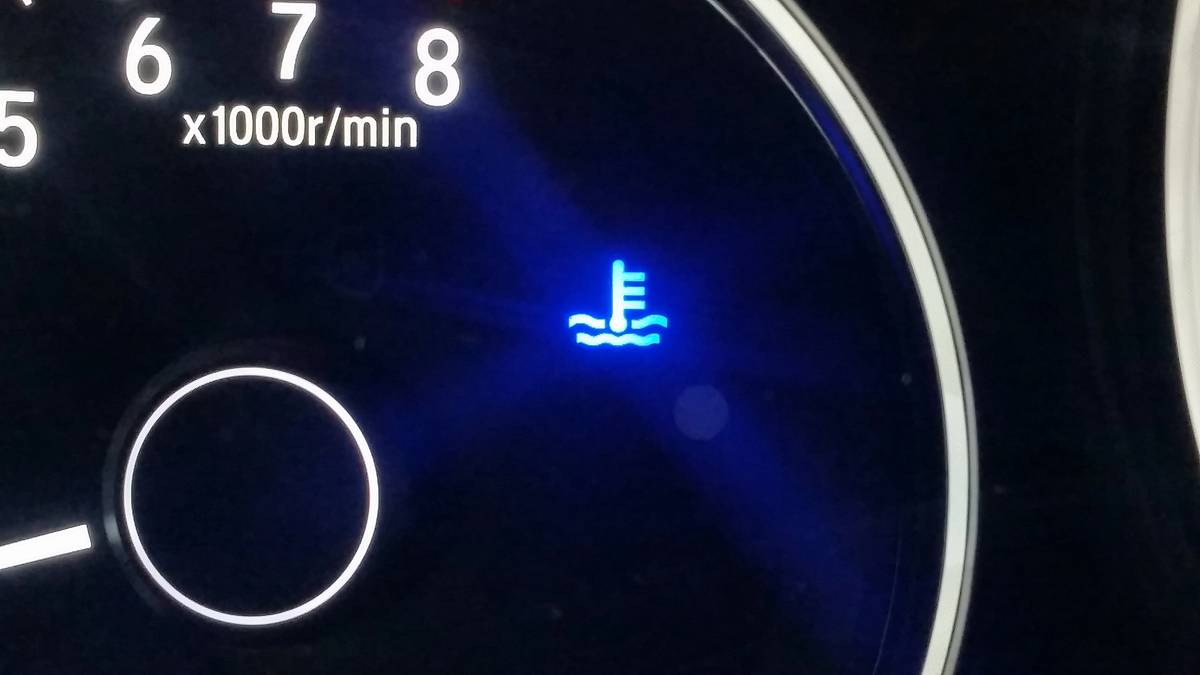Should You Warm Up Your Car in Winter?


Editor’s note: This article was last updated on Dec. 5, 2023. It has been reviewed by Cars.com Senior News Editor Jennifer Harrington and is still accurate.
If you’re in a hurry and just want an answer to the above question, it’s no. You no longer need to warm up your car in winter — for your car’s sake — unless it’s old enough to have a carburetor (unlikely unless it’s at least 30 years old), or it’s electric or a plug-in hybrid.
Related: When Should I Precondition an EV?
Wait, electric? You bet. But if you need to be convinced why this is true for a conventional car, or want more details on why you should warm up an electric vehicle and might want to warm up a gas or diesel car, read on.
It Used to Be Different
Without question, just a few decades ago warming up a car used to be necessary for two primary reasons related to the less sophisticated nature of both cars and motor oil. Most cars had carburetors instead of fuel injectors until roughly the mid-1990s, and carbs were imprecise devices even at their best, especially upon startup when they choked the engine and ran fuel-rich until the engine warmed up.
Part of the problem is the intake manifold that routed the air-fuel mixture to the cylinders would allow liquid fuel to pool. The manifold, which back then was always metal, had to literally warm up until it became hot enough to vaporize fuel; until it did, the engine would run rich, rough, stall more easily and pollute like mad. Fuel injection, especially with time and improvement, solved this.
What’s changed with oil is that it’s better than it used to be, flows easier at colder temperatures and is better matched to the engine in which it’s used. What hasn’t changed is that more wear happens when you crank the engine and for the few seconds after it starts, before the oil circulates and lubricates its various surfaces, than in the tens or even hundreds of miles of driving that follow. It’s just that today’s oil is better at shortening that oil-starved period.
However, there are means to give your engine a leg up.
So, How Long Should You Let Your Car Warm Up?
If you’re still wondering how long to wait before putting the car in gear after starting the engine in cold temperatures, how’s 30 seconds? In a car that’s well maintained and operating properly, that’s plenty of time. The most important tip is not to accelerate too aggressively until the engine is fully warmed up. (This is also true in warm weather, though it takes longer when it’s cold.) We’re not saying you have to make a menace of yourself in traffic, but avoid flooring it immediately. If it gives you a clue, some performance cars — including BMW M cars and the Chevrolet Corvette — have long featured instrument panels that start out with a lower redline (that’s the maximum recommended rpm on the engine speed gauge, called the tachometer) when the engine first starts, and it gradually increases as the engine warms.

If your car has a temperature gauge, regular operating temperature will be when the needle is in the middle between the C and H (for cold and hot, naturally). Some cars now show a blue indicator to represent a cold engine; when that goes off, it’s warmed up. Note that engines warm up faster when driven than when left to sit, idling, meaning you will also warm up faster that way, because a conventional car cabin’s heat comes from the engine. That brings us to …
There Are Other Reasons to Preheat a Car
We suspect cars are more often pre-started for the occupant(s) than the vehicle, either manually or remotely via key fob or smartphone app. And we’re not here to judge; getting into a warm car is more pleasant.
But it also gives window defrosters a chance to work. Even in cars without a heated windshield wiper park, which warms and softens wiper blades where they rest, a warm interior and warm windshield or rear window can ensure that the wipers conform to the glass and do their job better. A fully warmed cabin can even melt accumulated snow from the windows, though this isn’t the environmentally conscious approach — it wastes fuel and releases carbon dioxide. Remember: Driving a car (even if doing so moderately) warms the engine and the car’s occupants much faster than letting it idle.
There are experts who believe even modern engines are best driven sooner rather than later. According to EPA research, most automakers recommend to skip idling and instead drive off gently after letting the vehicle run for about 30 seconds. What’s more, the EPA says that by driving the vehicle rather than letting it idle, the engine will reach its optimal operating temperature faster, and the catalytic converter (which reduces emissions) will start to work much sooner. It also reports that personal-vehicle idling wastes about 3 billion gallons of fuel each year in the U.S. and generates around 30 million tons of carbon dioxide annually.
Gasoline and Diesel Differences
If you think your gas-powered car takes a long time to warm up, you should try a diesel for perspective. Diesel engines are more efficient than gasoline engines, and if you consider that the engine’s job is to produce motive force, heat is a sign of inefficiency. We’ve driven diesels in extreme cold (zero degrees) that have struggled to keep the cabin warm. Both for this reason and because they’re more difficult to turn over than gas engines in the best of conditions, diesel engines are more often fitted with electric block heaters that can be plugged in to keep the engine block and all associated lubricants warm before you even start the engine. Gasoline engines in the coldest climates can also benefit from these electric aids.
More From Cars.com:
- Why Do My Tires Lose Pressure in Cold Weather?
- How to Survive Winter With Rear-Wheel Drive
- How to Store Your Car for Winter
- How to Safely Remove Snow and Ice From Your Car
- Can a Car Battery Freeze?
You Should Preheat Your Electric Car
You probably weren’t expecting this, but we do recommend preheating your electric car or plug-in hybrid while it’s still connected to grid power, especially if your range is limited. The reason is that if you preheat using “wall” power, you preserve the full capacity of your battery for range and cabin-heat maintenance.
Unlike gasoline and diesel vehicles, battery-electrics (and PHEVs operating in electric mode) rely on electricity for heat, and electric heat sucks a lot of power. It requires so much power, in fact, that we recommend equipping your home with 240-volt Level 2 charging if you can afford it even if you purchase a PHEV that can charge fully overnight on 120 volts. In our experience, 120 volts isn’t enough to preheat a plug-in in winter (or precool one sitting in the summer sun, for that matter), leading to some diminishment of the battery charge by preconditioning before you depart. The upside is that Level 2 also charges a minimum of twice as fast as a 120-volt outlet.
The above is about maximizing EV motoring, which is the more affordable choice even with a hybrid that can revert to gas-electric operation, but many PHEV manufacturers also build thermal management into their battery packs, so leaving your car plugged in or preconditioning it, depending on the vehicle, also prepares the battery. A warmer battery also maximizes power and range in cold temperatures.
Related Video:
Cars.com’s Editorial department is your source for automotive news and reviews. In line with Cars.com’s long-standing ethics policy, editors and reviewers don’t accept gifts or free trips from automakers. The Editorial department is independent of Cars.com’s advertising, sales and sponsored content departments.

Former Executive Editor Joe Wiesenfelder, a Cars.com launch veteran, led the car evaluation effort. He owns a 1984 Mercedes 300D and a 2002 Mazda Miata SE.
Featured stories




